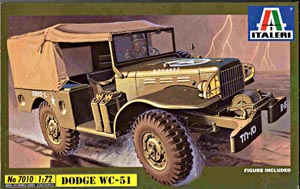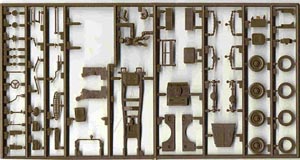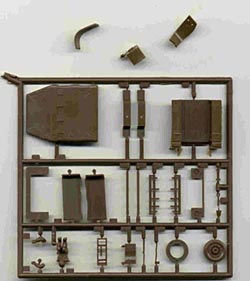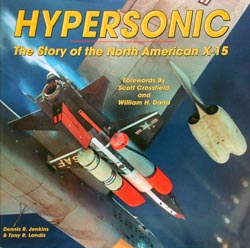It appears that a little housecleaning is in order. Apparently some of my email links that y'all are finding and attempting to use are tied to my old email address. That is especially true if you've been browsing thru some of the archived issues. So…on the off chance that one or two of you have tried to contact me using the old address and have given up because it either bounced or you got an indication that it was no longer valid, the correct and current email address that will allow you to reach me is: tennexican@mindspring.com
Now, on to this month's column…what there is of it. Instead of building models, writing or doing anything else even remotely connected to my business, I've spent the last three weeks and more money than I want to think about (Mainly because if I think about it, I'll realize that I don't have any money left!) trying to get my car to pass the annual emissions test. By the time it finally made it, I was exhausted!
Those of you who live in the boonies or in states (or areas of states) where air pollution isn't that much of a problem are probably thinking that I'm making much ado about nothing. I wish I was. Readers who live in such places as Los Angeles, Houston and (unfortunately for me) the Ft. Worth/Dallas area know exactly what I'm talking about.
Considering my recent automotive trials and tribulations, a new kit from ITALERI (https://www.testors.com) couldn't be more appropriate. Particularly when it's a military truck from WW-II that pre-dated environmental concerns and tailpipe emissions regulations by several decades. There are certain aspects of the good ol' days that are mighty appealing.
 In any event, the kit in question is the Dodge WC-51 4x4 weapons carrier. While it didn't become the media darling that the Jeep did, it was just as good a vehicle or better (Jeep enthusiasts will argue that one). You may have noticed that the ambulance used in the TV series M*A*S*H was a modified WC-51. And if you doubt the popularity of the Dodge military trucks, keep in mind that it was requests from ex-G.I.s to Dodge wanting to know where they could buy a truck like the ones they drove in the war that resulted in the Dodge Power Wagon. In any event, the kit in question is the Dodge WC-51 4x4 weapons carrier. While it didn't become the media darling that the Jeep did, it was just as good a vehicle or better (Jeep enthusiasts will argue that one). You may have noticed that the ambulance used in the TV series M*A*S*H was a modified WC-51. And if you doubt the popularity of the Dodge military trucks, keep in mind that it was requests from ex-G.I.s to Dodge wanting to know where they could buy a truck like the ones they drove in the war that resulted in the Dodge Power Wagon.
But I digress. The kit is produced in 1/72nd scale and is very nicely done for it's small size. It's basically a typical 1/35th scale effort shrunk to a smaller size. Between the number of parts and the miniscule size of some, you'll definitely need your OptiVisor and a pair of good tweezers on hand before tackling this little puppy.  You get 85 o.d. styrene parts, a small decal sheet and their typical instructions in a shrink wrapped, end flap box. Since the instructions are a five-panel foldout design featuring their familiar all-drawings international style, they're the biggest thing in the box. Parts are crisp and, for the most part, flash free. Given the number of parts and the small size, a little bit of flash here and there (mainly on the two figures) is quite forgivable. You get 85 o.d. styrene parts, a small decal sheet and their typical instructions in a shrink wrapped, end flap box. Since the instructions are a five-panel foldout design featuring their familiar all-drawings international style, they're the biggest thing in the box. Parts are crisp and, for the most part, flash free. Given the number of parts and the small size, a little bit of flash here and there (mainly on the two figures) is quite forgivable.
 Component breakdown and buildup sequence is very similar to larger 1/35th kits. Separate frame, separate fenders, individual suspension parts and so on. That's one reason for the large number of parts on such a small kit. One thing I did find peculiar is that there are no clear styrene inserts for the windshield glass. Not that hard to create yourself with some .010" or .015" clear sheet styrene, but still a strange omission. Component breakdown and buildup sequence is very similar to larger 1/35th kits. Separate frame, separate fenders, individual suspension parts and so on. That's one reason for the large number of parts on such a small kit. One thing I did find peculiar is that there are no clear styrene inserts for the windshield glass. Not that hard to create yourself with some .010" or .015" clear sheet styrene, but still a strange omission. Decals are nothing more than a star-in-circle for the hood and the various lettering and assorted stencils that every military vehicle had. If you want to personalize this thing, you'll have to find some supporting photographs. However, the markings (along with the instructions) give you a choice of three different Army vehicles and one Marine version. It's the numbers on the stencils that change, because nothing else does. Not even the color. If you're a small scale fan and you've been looking for something a little different, this'un will do it. And the price ain't bad either at $9.00.
 Moving from the factual to the fanciful, the latest retro-style kit of Spiderman from POLAR LIGHTS (https://www.polarlights.com) is particularly welcome. When Aurora released this kit during the 1960s, it was to a relatively small 1/12th scale, making the finished model 6" tall. Instead of repopping the kit from it's original molds, POLAR LIGHTS created a vintage reproduction of the kit from new molds in a larger 1/8th scale that would fit right in with the rest of their repop/reproduction releases. The result is an impressive 9" tall model. Price? A very reasonable $18.99. POLAR LIGHTS has done it again! Moving from the factual to the fanciful, the latest retro-style kit of Spiderman from POLAR LIGHTS (https://www.polarlights.com) is particularly welcome. When Aurora released this kit during the 1960s, it was to a relatively small 1/12th scale, making the finished model 6" tall. Instead of repopping the kit from it's original molds, POLAR LIGHTS created a vintage reproduction of the kit from new molds in a larger 1/8th scale that would fit right in with the rest of their repop/reproduction releases. The result is an impressive 9" tall model. Price? A very reasonable $18.99. POLAR LIGHTS has done it again!
The kit is comprised of 25 parts in three bags, all of it packed into their usual retro top over bottom box. And, of course, there's that now-familiar oval window on the bottom of the box so you can see what color the parts are molded in. As is their normal practice, one in every 12 kits is molded in white and the window allows you to find one of the less common kits instead of buying one blind and praying. Moldings are crisp and clean with no flash on any of the parts. Construction doesn't require any out-of-the-ordinary methods and the familiar retro style instructions will keep you out of any possible trouble. In other words, this is a painter's model. Since the web pattern on Spidey himself is recessed, a .005" Staedtler Pigment Liner or similar would be a great way to create a realistic effect. Conversely, the spiderweb background is a solid piece of clear styrene with the web lines being raised. This calls for masking off the clear panels and leaving the raised lines exposed for painting. Nothing to it, really, except for the patience needed to do that much masking. Only one part of the kit might cause a problem for some, especially if you're planning on entering Spidey in a contest, but I understand the reason for it. The web that extends from Spidey's hand to the villain who's lying on the floor is molded as an open web combining plastic lines and open spaces. Due to molding limitations, this results in the individual lines being way too heavy. Beyond that, it's molded in an arc that requires a certain amount of strength to remain rigid. While this can be a problem under certain conditions (such as contests), it certainly doesn't detract from the kit. Keep in mind that Spidey is a cartoon superhero. The fact is that certain things can appear to be oversize, out of proportion, enhanced or just plain over the top and still fit perfectly with the scene. All in all, it's an excellent kit that I'm delighted with. It should be a big hit with cartoon/fantasy fans Buy the kit (or several), rent or buy the Spiderman movie video, build it and have a blast. What else does POLAR LIGHTS have in store for afficianados of cartoon denizens? They've already announced two: Batboat and The Incredible Hulk.
So much to do, so little time. That phrase is really driven home when you get your hands on a magnificent publication such as one of the latest from SPECIALTY PRESS (https://www.specialtypress.com). Do you wait til next month to review it? Mention it briefly here and do a proper review later? Or hide your head in the sand and hope no one notices your quandary? Well, the last option has never done the ostrich any good and it probably won't serve me any better. As for the first choice, that would be doing a disservice to a superb book. That leaves me with the second option as the only practical way out, so…...
 The book in question is Hypersonic: The Story of the North American X-15 by Dennis R. Jenkins & Tony R. Landis. It's a hardcover volume utilizing a 10" x 10" format. Inside you'll find 276 pages of glossy paper, 500 b&w photos, 50 color photos and 100 drawings. Quality is everything you could hope for and then some. Price? $39.95. Get it from your nearest bookstore or hobby shop. You can also order direct from SPECIALTY PRESS, but be sure to add $4.95 per order for shipping and handling if you do. The book in question is Hypersonic: The Story of the North American X-15 by Dennis R. Jenkins & Tony R. Landis. It's a hardcover volume utilizing a 10" x 10" format. Inside you'll find 276 pages of glossy paper, 500 b&w photos, 50 color photos and 100 drawings. Quality is everything you could hope for and then some. Price? $39.95. Get it from your nearest bookstore or hobby shop. You can also order direct from SPECIALTY PRESS, but be sure to add $4.95 per order for shipping and handling if you do.
Anyone who's in possession of more than two or three of the Warbird Tech volumes should be familiar with the work of both Dennis Jenkins and Tony Landis, two very fine aviation historians. Because there is so little time right now (for me), I'm not even going to try mentioning even one thing that's in the book. If I did, I'd be running on for another couple or three thousand words. I'll save that for next month. Which leaves you with two choices. Either go out and buy the book based on these three paltry paragraphs (and you really should), or wait for a full review next month and kick yourself because you didn't buy it sooner.
And that, as they say in the film industry, is a wrap. See you next month.
| 








|